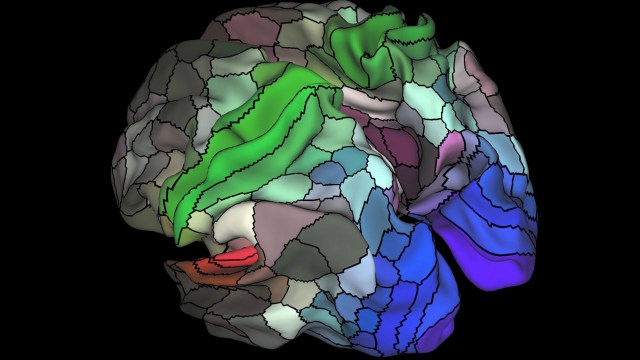The Multiverse for non-scientists

Why we’re positive the Universe isn’t all there is, and what the different possibilities for a Multiverse are.
“Go, then. There are other worlds than these.” –Stephen King
When you think about the Universe, most people think about the vastest depths of space, to the limits of what humanity has ever observed, and of everything that ever was or will be. But even with as vast as the Universe is:
- containing hundreds of billions of galaxies,
- each with billions or even trillions of stars,
- that’s been around for 13.8 billion years since the Big Bang,
- with the most distant matter-and-energy we can see already 46 billion light years away,
- and a total of around 10⁹¹ particles accessible to us,
it’s still finite and limited. That’s our observable Universe, which we know began at the moment of the hot Big Bang, and the sum total of everything that’s ever been accessible, information-wise, to anything within our galaxy. But perhaps there’s even more than what we can observe out there.
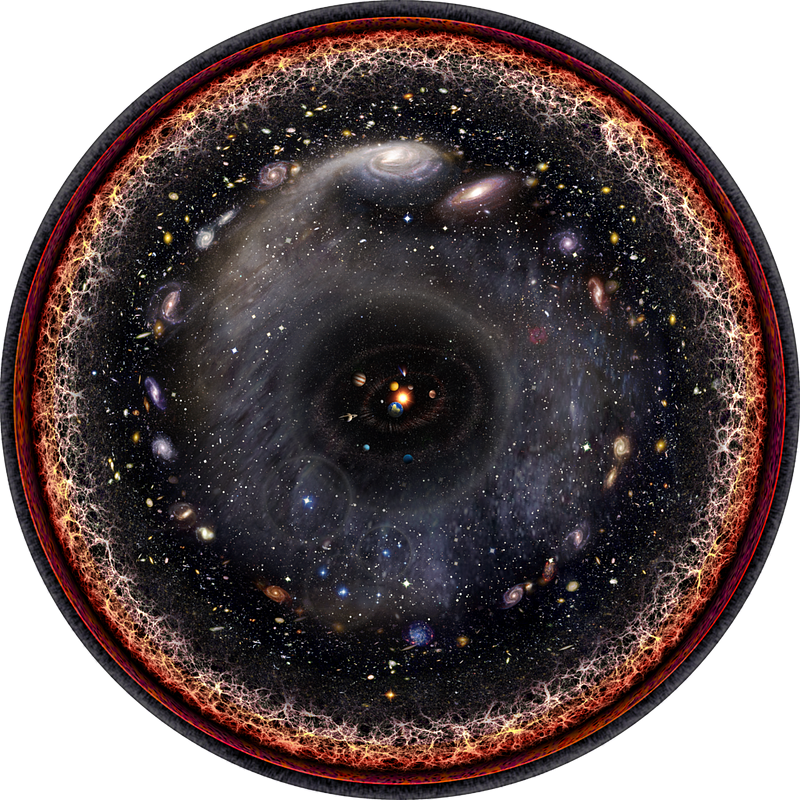
If we were at any location in the Universe other than the one we’re presently at, we’d be able to see the same amount of Universe. On the largest scales, the Universe is more than 99.99% uniform, with variations in density amounting to less than 0.01%. This means that if we happened to be located anywhere else, we’d also see hundreds of billions of galaxies, around 10⁹¹ particles, out to a distance of about 46 billion light years. We’d simply see a different set of galaxies and a different set of particles, along with slightly different detailed features.
From everything we can observe, and from all the theoretical hints the Universe gives us about its topology, shape, curvature and origin, we fully expect that there’s more Universe out there — identical in properties to what we observe — beyond what we can see. It’s only due to the fact that the Universe has been around for a finite amount of time that we can only observe a specific part of it. This is the most simple definition of Multiverse that’s out there: the idea that there’s simply more, unobservable Universe out there beyond what we can see.
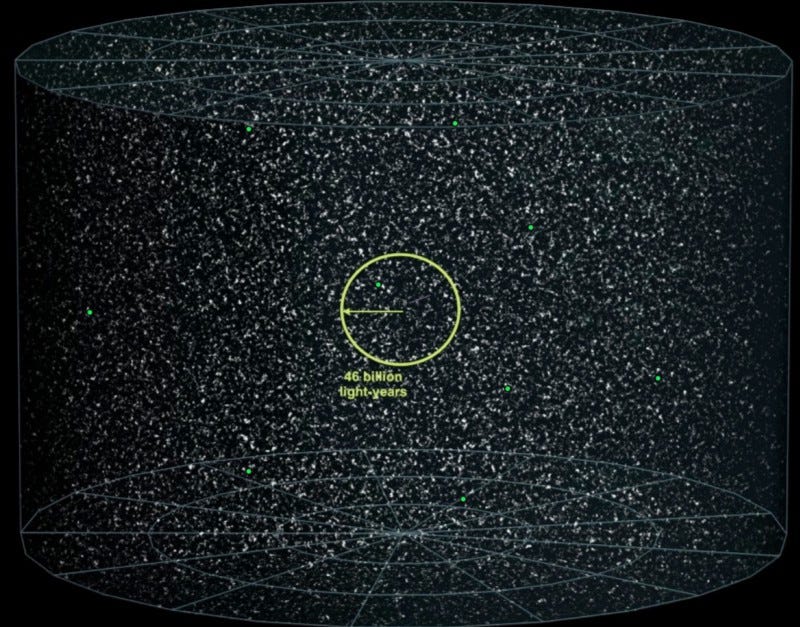
Most scientists take that as a given, as if it were otherwise, we’d see evidence for the Universe either being significantly curved or for seeing repeat patterns in, for instance, the Cosmic Microwave Background. The lack of evidence for this is a strong indication that there’s a lot more Universe out there beyond our own. In fact, the extraordinary lack of curvature indicates that there’s at least hundreds of times as much Universe as we can see out there beyond what’s observable to us; the unobservable Universe is much bigger than our own! But however large it is, it all presumably originated from the same cosmic event — the same Big Bang — all those billions of years ago.
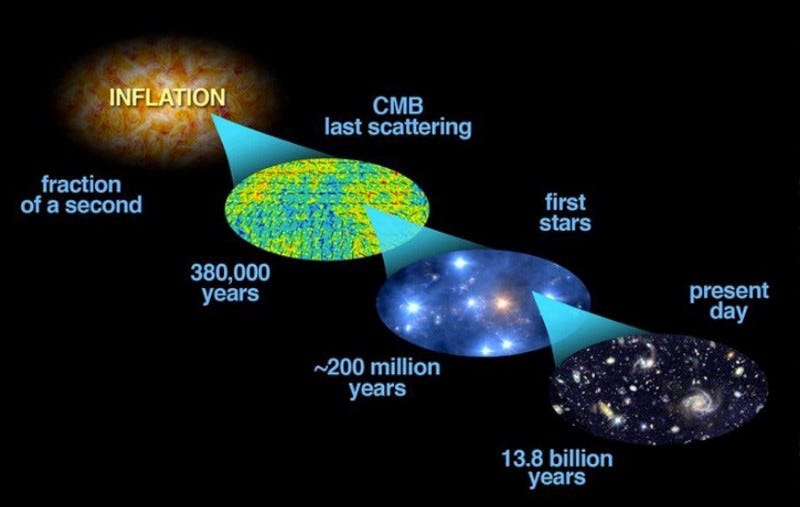
But the Big Bang wasn’t just “the beginning” of the Universe. There was a state that came before the Big Bang that set it all up: cosmic inflation. This exponential, rapid expansion of space itself in the early Universe creates more and more space for as long as it goes on. And while inflation certainly came to an end where we are, there’s a bizarre fact about it that might boggle your mind: the rate of at which new space gets created inflation in practically all models of it occurs faster than it can come to an end and give rise to a Big Bang. In other words, inflation predicts an extraordinarily large number of disconnected Big Bangs that each look like their own Universe, far bigger than the observable part.
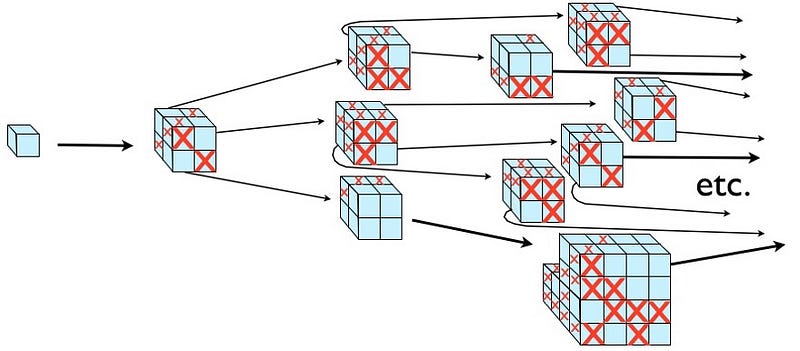
That’s an even bigger Multiverse than we previously considered, and if the inflationary state was an eternal one (as it may have been), that means there’s an infinite number of Universes out there, not just a finite number. But it’s conceivable that the situation gets even weirder, because — and this depends a whole lot on the dynamics of inflation — these other Universes that grew from different Big Bangs may have fundamentally different physical laws and constants governing them. In other words, these might not just be regions where there’s “more Universe like ours,” but there might be other Universes out there completely different from our own.
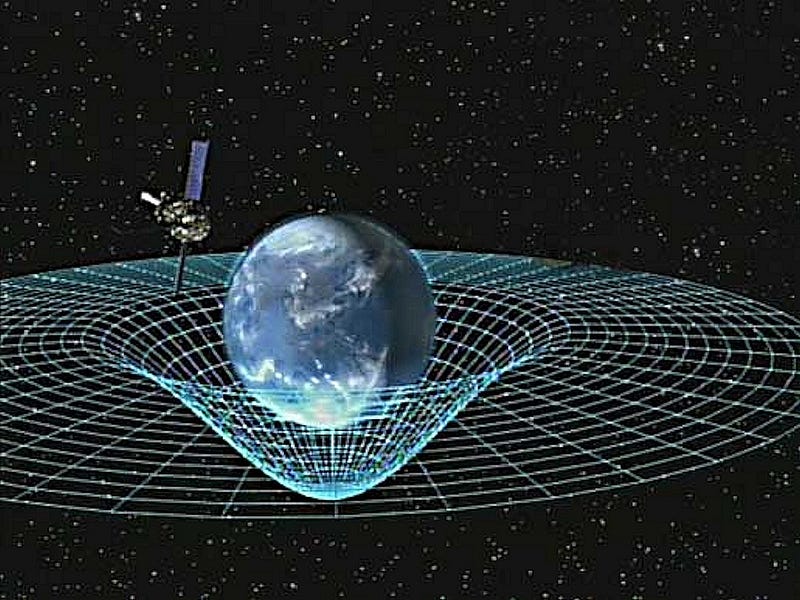
So what is the Multiverse? It could mean one of three things:
- More “Universe” like our own that came from the same Big Bang, but isn’t observable.
- Or it could mean more Universes like our own that came from different Big Bangs, but that originated from the same, common inflationary state.
- Or it could mean a wide variety of Universes — some like our own and some different — with different constants and even laws governing them.
The Multiverse may be finite in size and number of Universes, or it could be infinite. If you accept the Big Bang and modern cosmology, then the first one is definitely true. If you accept cosmic inflation (and there are good reasons to do so), then so is the second one. And if you accept certain models of String Theory or other unification ideas, the third one may be true as well. (But not necessarily!) And as for the finite-or-infinite question? That’s still something we don’t know; there’s a theorem that says inflation couldn’t have gone on forever, but there are loopholes that may allow it to have done exactly that, after all.
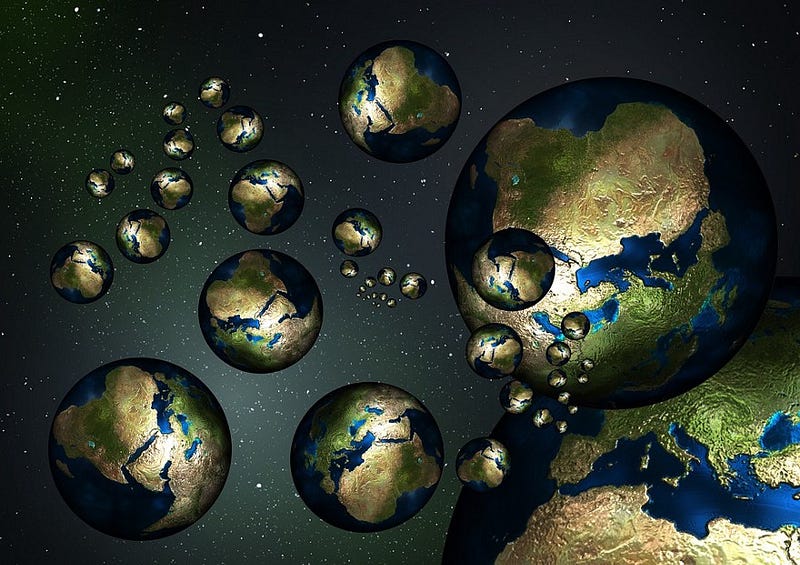
You might not like the philosophical implications of the Multiverse, or how many scientists seem to have given up on solving problems by appealing to this Universe; I don’t like it either. But don’t doubt the Multiverse’s existence without considering the very good, scientific reasons that motivate it. You don’t have to be a scientist to appreciate that!
This post first appeared at Forbes, and is brought to you ad-free by our Patreon supporters. Comment on our forum, & buy our first book: Beyond The Galaxy!





